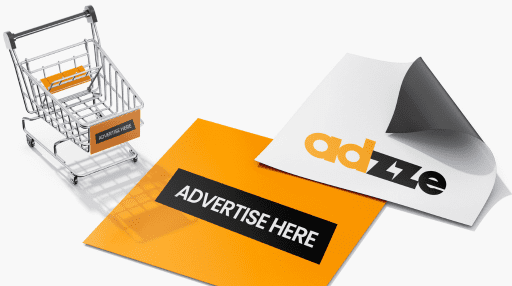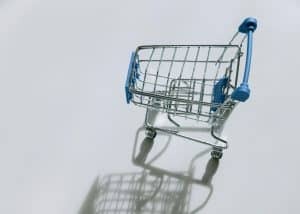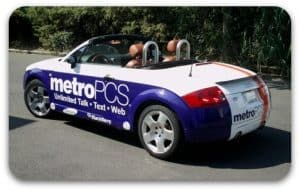Recall Advertising Needs More Than Just Sight and Sound
Recall advertising is all about one thing: making your brand unforgettable. Traditionally, this meant relying on visual creativity or catchy jingles. But today’s saturated media landscape demands more. Consumers are bombarded with thousands of messages daily, and most get lost in the noise.
So how do brands cut through?
They go beyond the screen. The future of recall ads lies in multisensory marketing—engaging not just the eyes and ears, but also touch, scent, and taste. These underused sensory pathways hold immense power to increase memory retention and emotional connection.
In this blog, we explore how marketers can tap into multisensory strategies to improve recall advertising, with examples, scientific insights, and actionable tactics.
The Neuroscience Behind Multisensory Recall Advertising
Why Multisensory Experiences Stick
Neuroscientific studies confirm that the more senses you engage, the stronger the memory. This is known as multimodal encoding. When sensory inputs overlap—such as sight and smell, or touch and sound—they activate deeper regions of the brain linked to memory and emotion.
In fact, a study from the Journal of Neuroscience shows that scent alone can trigger a memory faster and more vividly than images or words.
This is a huge opportunity for recall advertising. By adding scent, texture, or even taste to a campaign, you create not just an impression—but a lasting one.
The Power of Touch in Recall Ads
Why Tactile Marketing Works
Touch adds a new layer of emotional engagement. The physicality of an object increases its perceived value and makes the brand feel more real.
That’s why recall advertising campaigns using in-hand media—like branded coffee sleeves, pizza boxes, or pharmacy bags—are so effective. Consumers physically handle the brand message, which reinforces memory encoding.
Practical Applications
Textured Printing: Use embossed or raised printing in your brochures or packaging to create a memorable tactile feel.
Branded Items: Distribute items like drink coasters, laundry bags, or cardboard menus with embedded messaging.
Interactive Packaging: Think of peelable labels or rough-texture sleeves—simple but effective in activating sensory pathways.
Smell: The Underrated Recall Ad Trigger
Scent + Memory = Recall Power
Smell bypasses the cognitive filters that visual and auditory stimuli pass through. It connects directly to the amygdala and hippocampus—the brain’s emotional and memory centers.
This makes scent a potent ally in recall advertising.
Brands like Abercrombie & Fitch and Singapore Airlines have long used scent as part of their brand identity. But it’s not just for luxury or retail—it’s ready to be integrated into recall ads in everyday spaces.
How to Use Scent in Recall Advertising
Scented Door Hangers or Flyers: Embed a subtle aroma to associate a scent with your brand.
Scented Stickers or Packaging: Use microencapsulated scents in promo materials.
In-Store Scent Zones: Align scent with product or brand identity (e.g., lavender for calm, citrus for energy).
These elements don’t just make an ad pleasant—they anchor your brand in memory via scent.
Taste: The Most Intimate Sense in Recall Advertising
Why Taste Delivers Long-Term Recall
Taste creates intimate, personal experiences. When tied to a brand moment, it becomes an emotionally charged memory—and emotion is the cornerstone of effective recall advertising.
Food and beverage brands have an obvious edge here. But even non-food brands can use taste experiences in activations or partnerships.
Taste-Based Recall Ads in Action
Sampling with QR Codes: Offer a taste test and link it to a digital experience or coupon.
Co-branded Giveaways: Partner with food vendors and deliver samples with branded materials.
Pop-Up Experiences: Offer product demos alongside a food or drink that reinforces your message.
These moments build not just a positive brand impression—but a memorable one.
Combining All Five Senses: The Ultimate Recall Ad Strategy
Multisensory Campaigns Drive Higher Recall Rates
The most effective recall ads are the ones that work across multiple sensory layers. Consider:
Touch (tactile item)
Sight (visual branding)
Sound (music or audio trigger)
Smell (embedded scent)
Taste (free sample)
The more integrated the senses, the more powerful the memory. This multisensory synergy is key for lasting recall advertisement impact.
Example—A Campaign That Got It Right
A coffee brand partnered with salons to deliver in-hand recall advertising:
Coffee sleeves had a raised design
A vanilla scent was embedded into the sleeve
Customers received a QR code that played a branded jingle
The sleeve offered a free sample to claim in-store
The result: over 4,000 redemptions in two weeks and a 68% increase in brand recall in post-campaign surveys.
Measurement: How to Track Multisensory Recall Ads
Making It Measurable
Yes, recall advertising is now quantifiable—thanks to modern tools:
Post-experience surveys: Ask respondents what they remember about the ad and brand.
Coupon code usage: Track usage linked to specific sensory materials.
QR code scans: Measure interactions from in-hand media.
Brand lift studies: Use digital follow-ups to measure memory retention.
With the right feedback loops, you can prove that sensory ads = stronger recall = higher ROI.
Final Thoughts: Sensory Makes the Message Stick
In a world where digital fatigue is real and banner blindness is common, recall advertising must evolve. Visuals and sound still matter—but adding touch, scent, and taste makes your brand unforgettable.
Multisensory campaigns are not a gimmick. They’re grounded in neuroscience and consumer behavior—and they give modern recall ads the edge needed in crowded markets.






